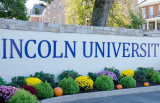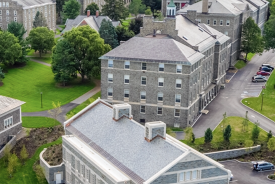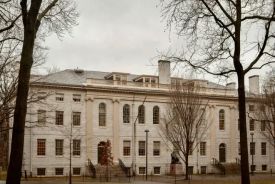Arizona Board of Regents member Fred DuVal knows university research is one of the most important reasons why the United States continues to lead the world in innovation. From new forms of clean energy, breakthroughs in technology, and new medical cures to conquering space and cybersecurity, DuVal knows that university research is responsible for creating breakthroughs in knowledge and solutions for society's biggest challenges.
As DuVal knows, Stanford University created the innovation environment for the computer revolution in the 1970s. The bioscience ecosystem that exists between the University of California in San Diego and the pharmaceutical industry has produced hundreds of new medical cures. The University of Alabama, the Department of Defense, and the community of Huntsville, Alabama, have combined to build an economic engine around national security solutions.
Arizona Is Doing Cutting Edge Research
The University of Arizona, says DuVal, is the nation's leading institution in space research. It's also among the national leaders in arid land sciences. Arizona State University recently landed one of five US Department of Commerce economic hubs and has the fastest-growing research portfolio in the United States. Northern Arizona University is on the cutting edge of anthrax research and sustainable forestry.
All this research provides value to the citizens we serve, says DuVal, but for many people, this research remains abstract and remote.
Stimulating Publicly Relevant Research
As DuVal knows, Arizona has sought to address this public awareness deficit by creating the Regents Grants program. This program uses dollars at the system level, working with state and local governments and NGO partners to identify and address immediate, tangible social and community issues. This work has spanned many areas, including forest health, groundwater, firefighter cancer, affordable housing, valley fever, and recycling.
For example, the bark beetle has been migrating throughout Arizona's forests, drying them out and creating increasingly flammable ingredients for wildfires. Arizona universities have applied consortia of faculty talent—merging forestry experts with data scientists and botanists—to not only track the beetle's migratory behavior but also deploy predictive tools for getting ahead of them and stopping their migration.
The Arizona Department of Water Resources has also gotten into the act, says DuVal, discovering and demonstrating that while Arizona does have a depleting supply of groundwater (with subsiding aquifers), it's also losing millions of gallons of rainfall water each year to runoff and evaporation.
Working with university faculty, the Department has mapped our state in a way that allows us to identify where this runoff might be routed, making it easier to replenish our water underground water supply.
In another example, an Australian study found that a fire retardant chemical called PFAS, typically embedded in the uniforms of local firefighters, can cause cancer. In fact, cancer rates among firemen are 25% higher than the normal population and tend to occur earlier in their lives. University researchers are now working with Arizona fire marshals to analyze PFAS chemicals and develop alternative fire retardants without a link to cancer or other forms of illness.
In short, this program aims to reengineer the typical research process.
In most cases, university research starts with a faculty member's curiosity or funding source, says DuVal. The Regents Grants Program, however, begins by identifying a public sector problem and then sourcing and deploying the faculty talent needed to tackle it. Essentially, we seek to become the think tank for the State of Arizona. We are, after all, the state's University system.
Explaining Our Work
When speaking with colleagues, Fred DuVal often cites what he calls the 'convenience mart test. For instance, as you check out with, say, a donut or cup of coffee, are you able to explain, in 30 seconds or less, how the sales taxes on that purchase are being used to improve lives?
Fred DuVal believes that these examples, and many others out there, meet that test.
© 2025 University Herald, All rights reserved. Do not reproduce without permission.









